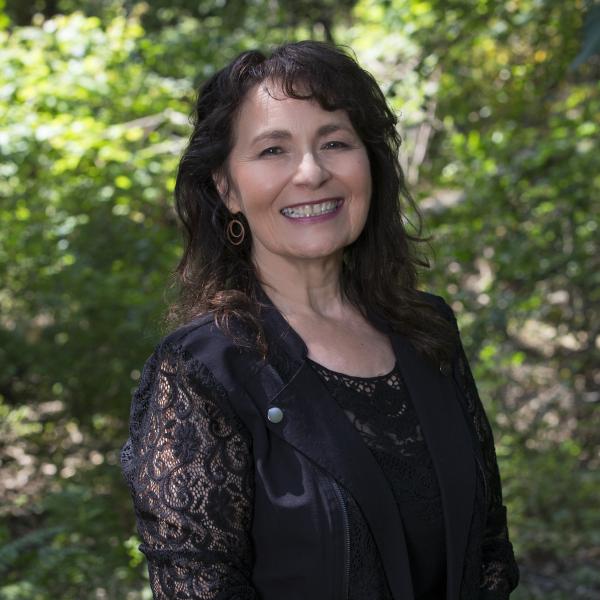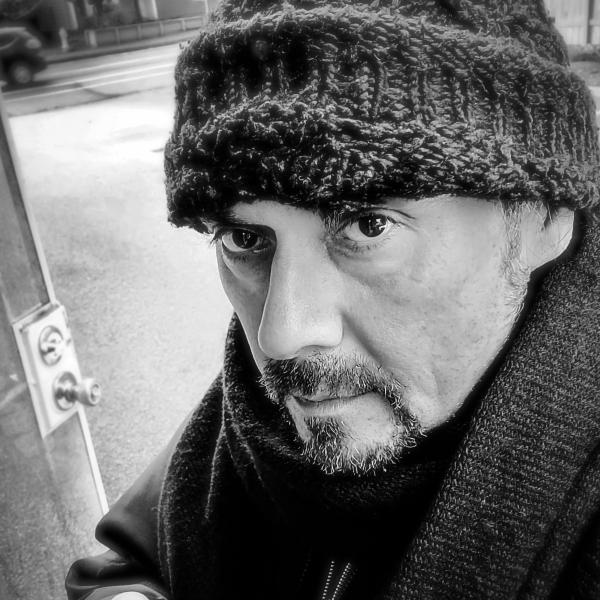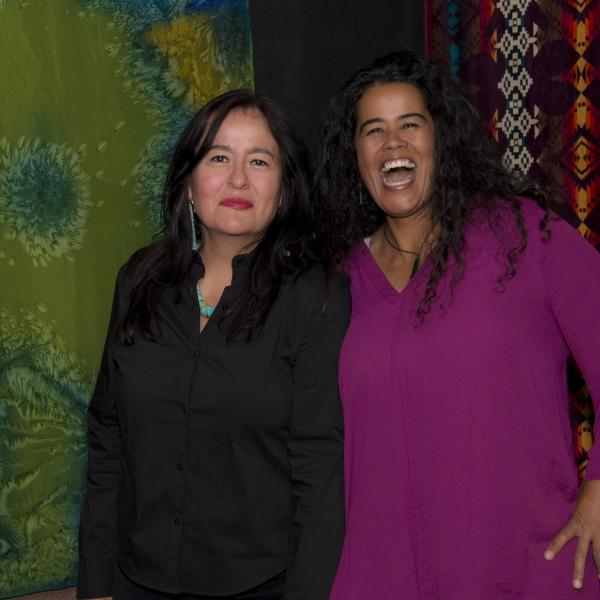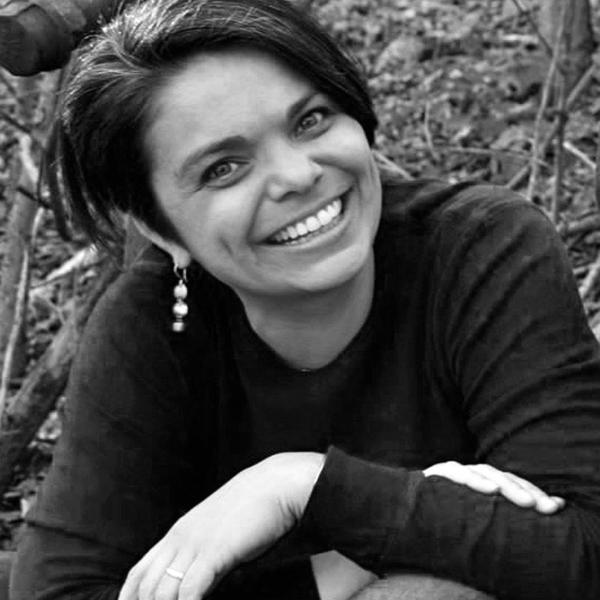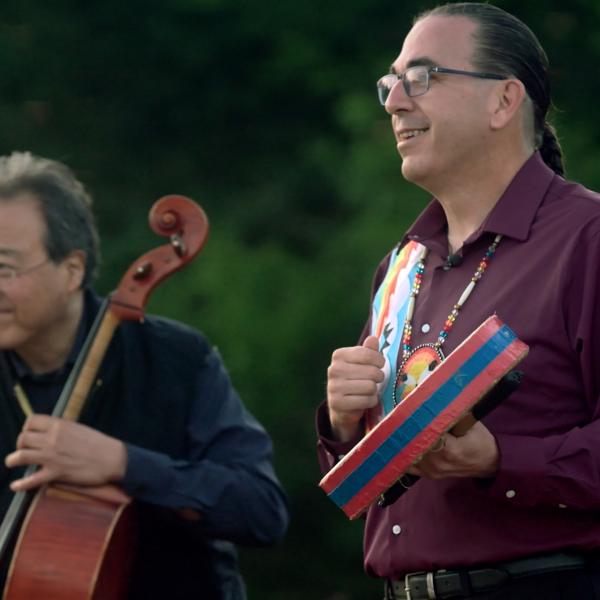Finding Their Way Back
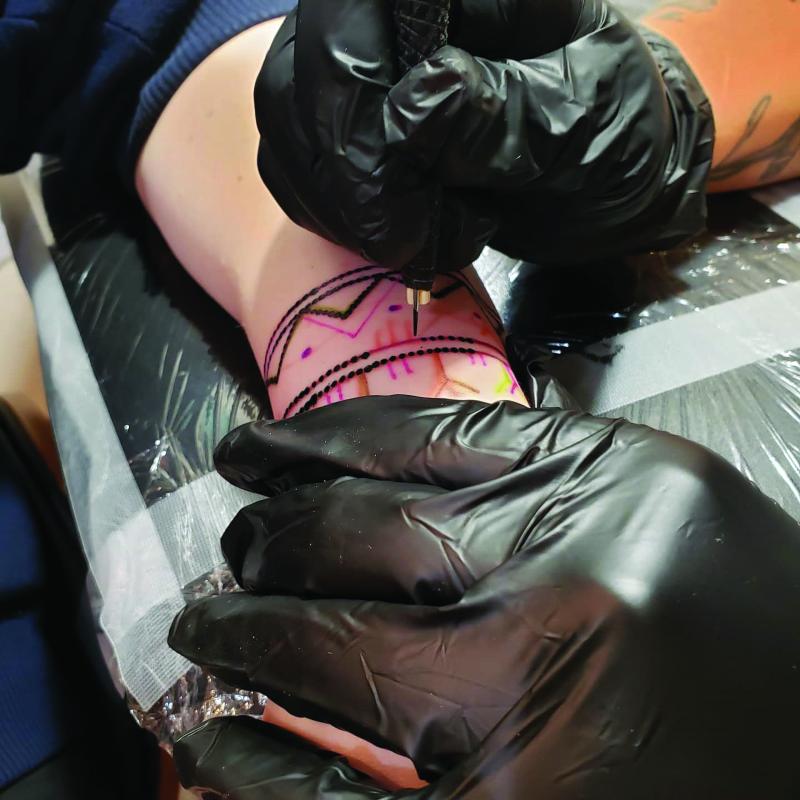
Tattoo artist Sarah Whalen-Lunn practicing her art. Photo courtesy of Sarah Whalen-Lunn
Traditional tattoo and visual artist Sarah Whalen-Lunn understands the attention she receives for Inuit tattooing, but she wants it to be clear that the work is not about her.
“I’m a vehicle. I’m a vehicle,” she told the Arts Endowment. “It’s not my work. I always look at it as uncovering what’s always been there. It’s more just the work of our ancestors. I happen to be lucky enough that it happens through me.”
Funded in part by an Arts Endowment grant, Whalen-Lunn will travel to the Aleut Community of St. Paul Island for two weeks of events, including workshops on traditional, ceremonial tattoos in summer of 2022. These workshops will focus on healing generational and historic trauma inflicted upon Alaska Native women, whom these tattoos are traditionally designed by and for. For Whalen-Lunn, whose own mother was removed from her community at birth, the process of learning Inuit tattooing began a healing and reconnecting process that continues to this day.
Whalen-Lunn spoke to the Arts Endowment about where her journey with Inuit tattooing began, its historic significance to Inuit women, and what she hopes this process gives other Alaska Native women, including the Unangan women of St. Paul Island.
CONNECTING TO THE CULTURE
I was maybe in my early 30s when my journey with tattooing began. I worked downtown here in Anchorage as a bartender for 15 years, single mom, just trying to do what I could to get by. I had just started producing art again, and I met another woman, an Iñupiaq artist from Kotzebue, Holly Nordlum. We were in this diaspora artist collective, so we were doing some shows together, and she started talking to me a little bit about this idea that she had to bring back traditional tattoos. Immediately I was like, "What are you talking about? What? We had that? Are you kidding me?"
Eventually it got to the point years later where Holly was collaborating with a woman in Denmark, [Maya Sialuk Jacobsen] who is Inuit as well. [Maya] had done a lot of research and had been working in the traditional way for about five or six years. They started taking formal applications [to train other Inuit women], and I almost missed the deadline. I thought, there are all these other people who are more Native than me. People who aren’t mixed, people who know about their history, know about their background, and I was not one of them. I thought there’s no way. I have no chance.
I interviewed, and then before you knew it, Maya was here and I was one of three women in the state being trained as a traditional tattooer. That’s how it started. We did all of our procedural work with a licensed tattoo artist up here, Jake Scriver, who’s been incredible. It was a complete life change for me—it’s still lifechanging for me. We’ve been doing this for maybe about four or five years now, traditional tattooing here in Alaska.
I think one of the reasons that they wanted me is because there’s so many of us who aren’t connected. Through colonization, there are so many of us who, like my mom, were taken out of her village through no fault of their own. I’ve gotten messages from people all over the world, like, "Oh my god, this is me. I just found out. My mom was adopted out," people looking to connect. I think that my story really resonates with a large group of people who are trying to find their way back to who their family is and who they are.
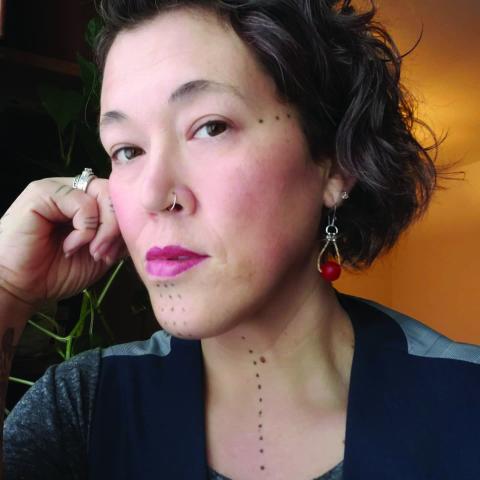
Tattoo artist Sarah Whalen-Lunn. Photo courtesy of the artist
"What we've found is the amount of pride and healing that wearing your traditional markings can do for you."
A PROCESS OF HEALING
Inuit tattooing was primarily done by women and for women for a multitude of reasons, not all of which I’ll go into here, because that’s meant for us and our people. Some things aren’t meant to be shared.
I don’t think I know any Indigenous woman who has not been hurt, traumatized, abused, endured some massive form of trauma, either directly perpetuated against them or close family members. We all know someone in our immediate community, and there’s been a lot of shame. Throughout the past couple hundred years since colonization, there’s been a lot of shame in being an Indigenous woman and being an Indigenous person in general. I don’t mean to negate the men from that, and not to say that there weren’t men’s tattoos either, because as we go along, we’re finding more and more men’s tattoos as well, but not for the same meanings.
What we’ve found is the amount of pride and healing that wearing your traditional markings can do for you. When you’re out in the world and you don’t feel like you fit in, and you’re at the grocery store just trying to pick out some oranges and people are looking at you weird. Then you look over and you see another woman with her tavluġun. You don’t even have to say anything. You just look and smile at each other. Immediately you are sisters. It has helped so much with rebuilding that strength of self, and I like to say it throws a steel rod down the center of who you are. You really have to be sure of that to walk around the world wearing your traditional markings.
There’s science-backed evidence that any time you start really delving more into your culture and your tradition, it propels you to do better. You want to show up in a better way for your family and your people. It’s just so significant, the healing that it can do. That’s still a journey. How it’s changing me and what it is like for me is still a journey I’m on.
Any time you’re working with somebody, working in such an intimate way, skin poking and skin stitching, there’s trauma that’s held in the body, and even just something as simple as that can be a release that’s not expected.
These are things we’re really, really careful about, because we’re not out here trying to create any tutorials. Skin stitching is exactly what it sounds like. It’s sewing of the skin. I won’t go into exactly how it’s done, but it is literally making marks in the skin by sewing it. It was our, as Inuit, first form of tattooing.
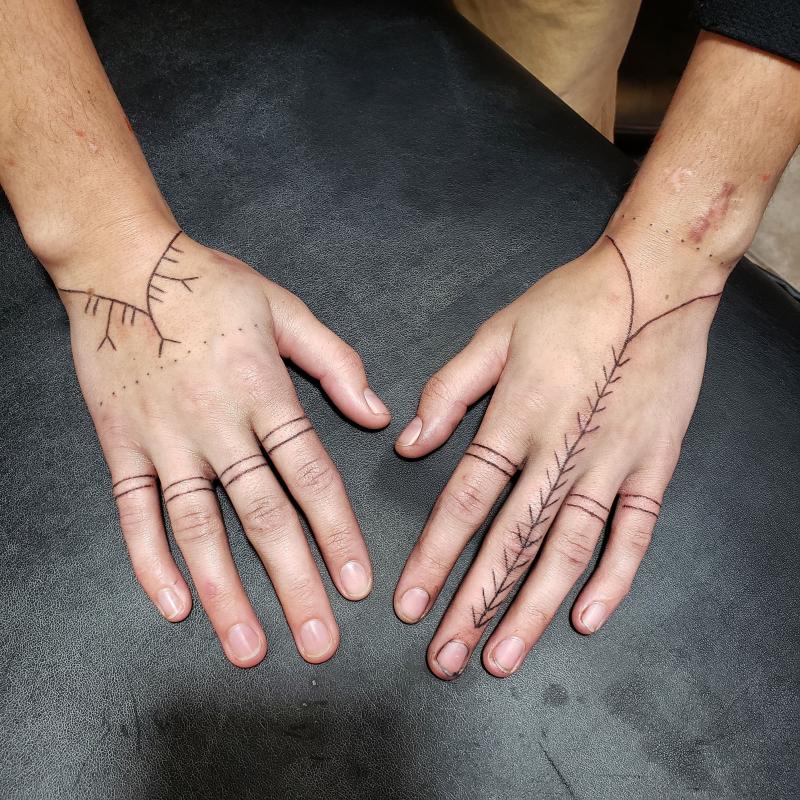
Traditional Inuit tattooing. Photo courtesy of Sarah Whalen-Lunn
RECLAIMING TRADITIONS
I think first and foremost, [what people should know about traditional tattooing] is we always push safety. We have to do this in a way that is safe for our people. Dion Kaszas in Canada, who is a traditional and machine practitioner, is amazing. He’s phenomenal. When Holly and I were at a traditional tattoo gathering in Hawai‘i, Dion was there, and one of the things that he said just struck a lot of points with me. It was that germ warfare was perpetuated against Indigenous people for a very long time, and we have to be careful with ourselves not to do that. We owe it to our people to proceed in the safest way possible.
One of the things that Holly talked about early on is that it’s very important for our people to have—and by our people, I mean all a way to access these markings. It’s not just for us in the cities. It belongs out in the villages. It belongs out in the farther, remoter places. This is where it needs to be brought back to. Ultimately the goal [for the Aleut Community of St. Paul project] would be to have an Unangam tattooer, so that everybody has their own person they feel comfortable going to. That’s the idea, to make it accessible for all of us.
It’s my job to facilitate what they are asking for. It’s my job to see how they want me to show up and my job to pay attention to what they’re looking for. I’ll be the one doing a lot of the hands-on work, but this project is not about me. This project is about St. Paul and the people there and what they’re doing. They’ve gotten to a point where they’re asking me to come in. They’re ready for something, and how this proceeds has to be based fully on what they’re wanting. This is their project.





